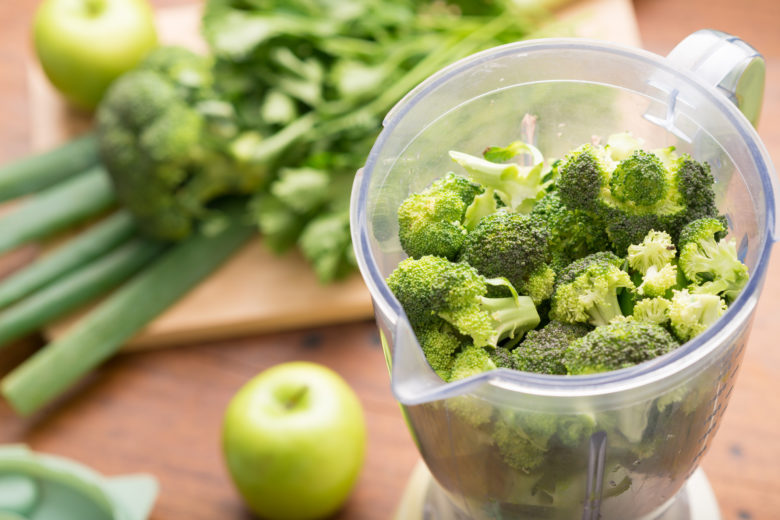
Whole foods are the hallmark of a healthful diet — not to mention a resounding message from the 2015-2020 Dietary Guidelines for Americans. But the whole foods movement is manifesting in other areas of nutrition as well, including among many tube-feeding communities. ![]()
Many individuals who are unable to eat by mouth rely on commercial formulas and may not be aware of other options. But with proper guidance, gastrostomy-fed people (who have a tube inserted into their abdomen that connects to their stomach) can have the option of making their own formula using whole foods — called blenderized feedings.
Potential Benefits
Vegetables, fruits, grains and legumes are packed with fiber and phytonutrients that are ideal for gut health. Many people who use blended feedings see a substantial improvement in their gastrointestinal function. “When people switch from commercial formulas to blended feedings, we see less abdominal bloating, nausea, reflux and retching, improved stools, better GI tolerance and, in general, they feel better and have more energy,” says Atlanta pediatric gastroenterologist Stanley Cohen, MD.
In the past 10 years, Houston pediatric dietitian Kristi King, MPH, RDN, LD, CNSC, says she has observed marked improvement in her patients’ GI symptoms (and quality of life) when switching to whole-food feedings. “Blended whole foods are trending in hospitals, either by using the hospital’s own recipes or commercial whole-food formulas, because patients prefer it and usually tolerate it better than some other formulas,” says King.
At home, eating the same meals as the family and “enjoying a variety of foods, the aromas and even burps of familiar food gives tube-fed patients satisfaction and a feeling of normalcy,” says Alissa Rumsey, MS, RD, CDN, CSCS, a nutrition and wellness consultant in New York City. Most feedings are done just like meals, three to six times per day, and are administered through the gastrostomy tube using a syringe.
Another advantage of whole-food feeding is that ingredients can be customized to meet an individual’s nutritional needs. This is especially important for anyone with intolerances or allergies to ingredients in commercial formulas.
While a considerable time commitment is required to prepare the feedings, there also are economic savings over most commercial formulas, especially if they are not covered by health insurance.
Possible Limitations
Risk factors associated with preparing homemade formulas include nutritional adequacy, safe food handling, tube clogging and improper administration.
Meeting nutritional needs with blended whole foods takes meticulous planning and the oversight of an expert. “One of the greatest concerns is that home feedings won’t meet nutritional requirements,” King says. “Careful attention to food selection, safety and handling are essential because many tube-fed people have compromised immunity.”
Patients with jejunal tubes (which direct feedings into the small intestine without being digested in the stomach), fluid restrictions or on pumped overnight feedings are not good candidates for blended feedings. “Assess the caregivers and patients to make sure they have the time, knowledge and skills to manage the challenges of preparing safe and nutritionally adequate [homemade formula],” Cohen says.
DIY Formula 101
Making tube-feeding formula can be relatively easy with the right equipment. Almost any food can be liquefied with a commercial blender, and some companies offer medical and RDN discounts.
Certain foods, such as cheese, seeds, corn, nuts and stringy foods, are more difficult to blend. “Warm and cooked foods blend easiest,” Rumsey says. Choose nutrient-rich foods to prepare different flavors of formulas: fruit, vegetables, grains and yogurt, or meats, grains and oils. Another option is combining homemade and whole-food commercial formulas.
Add liquids to the mixture to achieve the necessary consistency to flow through the particular size of gastrostomy tube. And flush tubes with water before and after feedings to prevent clogging.
7 Formula Blending Tips for RDNs
An ideal candidate for blended feedings is a patient who is medically stable and has a family with the ability, motivation, time and commitment to appropriately prepare the feeding. These individuals should be able to follow instructions and food safety guidelines.
RDNs must monitor patients and provide support and supervision to ensure the right materials and resources are used. While blended whole-food feedings is an emerging practice with little research and few professional standards guiding preparation and use, these tips can help promote safe preparation:
- Wear gloves, wash hands often, use separate cutting boards and wash produce thoroughly.
- Keep formulas refrigerated and discard after 24 hours.
- Jars of pureed baby food are good options to add to the blender to help meet nutritional goals.
- Raw seafood, undercooked foods and unpasteurized juice or milk are not recommended.
- Feedings are ideally administered several times a day but also can be used with a pump if the feeding is completed within two hours.
- Use healthy fats and oils, such as avocados or vegetable oils, to add calories and essential fatty acids.
- Avoid highly processed foods, such as potato chips and cookies. Vary the fruits, vegetables, grains and protein foods to provide adequate nutrition.
